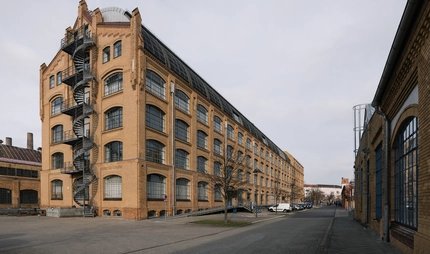
Wernerwerk Siemensstadt: Schaltwerk Hochhaus
An icon of modern times
Located between the Chartlottenburg and Spandau districts of Berlin, Siemensstadt (Siemens Town) documents industrial history towards the end of the 19th century. From 1899 onwards, it became an industrial district of Berlin in its own right, boasting factory buildings, residences and a utility infrastructure. Its appearance bears the stamp of one man first and foremost: Hans Hertlein, who was the director of the company's building department from 1915 to 1951 and created a uniform design not only for the factory buildings but for the area as a whole.
From 1899 onwards, it became an industrial district of Berlin in its own right, boasting factory buildings, residences and a utility infrastructure. Its appearance bears the stamp of one man first and foremost: Hans Hertlein, who was the director of the company's building department from 1915 to 1951 and created a uniform design not only for the factory buildings but for the area as a whole. The first high-rise factory in Europe One of the most impressive building complexes within the "Wernerwerke" is the Schaltwerk Hochhaus, a high-rise switchgear plant that was constructed between 1926 and 1928 according to plans by Hans Hertlein. With its modern steel skeleton structure, the high-rise building was an extension of the flat-roofed Schaltwerk building designed by Karl Janisch a few years before. As the first high-rise factory in Europe, the Schaltwerk Hochhaus is now an important example of the Neue Sachlichkeit (New Objectivity) style of building: the structure of the façade is created by the rows of windows alone and there are no perimeter block developments or imposing elements. In the 1920s, people loved to see the windows light up at night as they combined with the dark contours of the buildings to become a symbol of the "Electropolis". The Schaltwerk Hochhaus still hasn't lost any of its charm.



